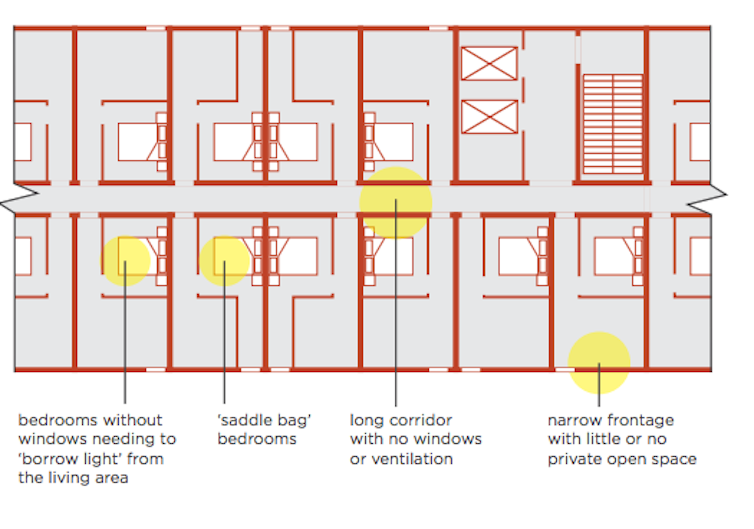Australia’s apartment boom is in full swing. Nationally, 40% of new dwellings are now apartments or units, and building approvals outnumber those for houses. Melbourne and Brisbane are the most extreme cases, but these trends are national; and they are fundamentally reshaping the future of urban Australia.
In Melbourne, for example, the inner city is being flooded with 1-2 bedroom micro-apartments set in increasingly tall towers (+30 storeys). Almost half are under 50 square metres - not much bigger than a generous double garage. These would be outlawed in other world cities, including Sydney. The Property Council of Australia and much of the industry acknowledges the problem. Victorian Planning Minister Richard Wynne has now released a discussion paper, and there is a plan for new guidelines next year.

The market is not delivering what families need, and as a result, future liveability in Australian cities is in jeopardy. Much of the commentary is about size and density. An urgent discussion is also needed about quality and the market.
Reports of “vertical slums” are not entirely unwarranted. Apartments can be great homes – why are ours so mismatched with families and affordability concerns? For working families in the city who need access to services and work, there are few affordable alternatives.
Quality vacuum – a race to the bottom
Many new apartments have bedrooms with no windows, low ceilings and inadequate storage. They have poor access to natural light and ventilation, and underperform on environmental efficiency. Internal amenity of apartments is comparatively under-regulated. Apartment bedrooms without windows, for instance, are illegal in New York, Hong Kong and Vancouver.

Current regulation is failing families and future Australians. Building Code of Australia (BCA) and National Construction Code (NCC) requirements, borne out of original concerns with safety, are seemingly inadequate to the delicate task of ensuring quality while enabling innovation. Even the Guidelines for Higher Density Development (DPCD 2004) fail to provide specific and measurable outcomes, with high-level objectives that are evidently easily bypassed in practice.

Marketing airspace - unconstrained towers
A recent report unfavourably compares Melbourne’s high-rise rules to those of world cities. Developers in Melbourne can build at four times the densities allowed in New York, Tokyo or Hong Kong. Moreover, inner city developers are generally under no obligation to contribute to essential public infrastructure, such as affordable housing and community facilities, through density bonus systems. The findings are nothing short of damning, not least for a city that prizes itself, year on year, as the “world’s most liveable city”.
Market-driven urban development “logic” is rarely questioned, but there’s evidence of wholesale market failure. Much of our high density, high-rise apartment stock caters to the local and overseas investor market, enticed by favourable taxation and regulatory regimes. Putting aside concerns about the potential impact of tightening regulations on foreign property investments, many new apartments seem basically unaligned to households’ and families’ changing needs.
Two priorities emerge: for reform, and for understanding changing housing needs.
Reform or regret
Hodyl’s report makes a case for urgent market reforms to establish density controls; density bonuses to link development to public benefit, including open spaces, affordable housing and community facilities and an enforceable tower separation rule to mandate the minimum distances between towers. It also argues that Melbourne would benefit from apartment standards.
In Sydney, guidelines and processes have long been in place to regulate minimum apartment sizes, maximum numbers of apartments per floor, requirements for window provision, minimum floor-to-ceiling heights and minimum storage sizes (SEPP 65).
Reforms towards “good design” pre-suppose an understanding of the future occupants of apartments and their housing needs. A recent study found “good design” is a reasonably uncontroversial concept: it is design that accommodates changing household comfort and needs, and contributes positively to the environment, health, wellbeing and safety.
A current study called the LATCH Project is underway to determine changing household needs and the everyday experiences of inner-city apartment dwellers, including families.
The research reveals the huge diversity of households – future apartment dwellers are not just single-person households and empty-nesters. They need daylight, functioning kitchen spaces, storage, nearby schools and open space. Things that currently fail to align with high-density developments across our cities.

